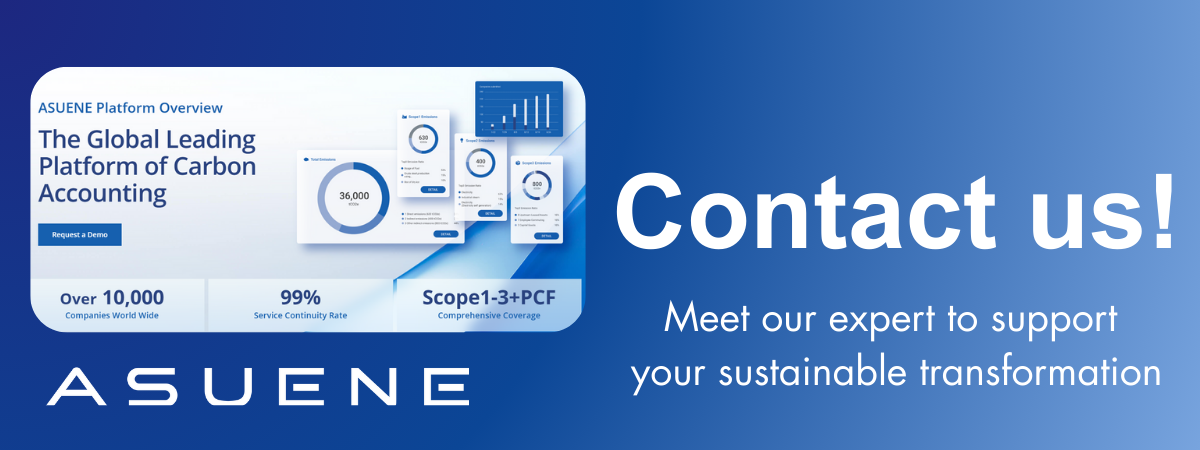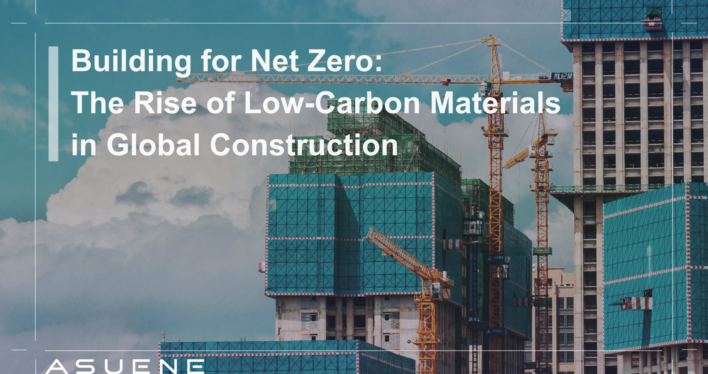- Article Summary
-
Introduction: Why Low-Carbon Construction Matters Now
As the world races toward ambitious net-zero goals, the construction industry stands at a critical crossroads. Globally, the building and construction sector accounts for approximately 39% of energy-related carbon dioxide emissions, according to the Global Alliance for Buildings and Construction. Of this, 11% comes from embodied carbon, which refers to emissions associated with building materials throughout their lifecycle: from extraction and manufacturing to transportation and disposal.
This spotlight on embodied carbon is driving demand for low-carbon materials, which are increasingly seen as a pivotal solution for reducing the sector’s carbon footprint. Nations and corporations alike are embracing carbon budgets and ESG mandates, compelling builders and developers to innovate and reimagine their supply chains. As sustainable procurement practices take root and lifecycle carbon assessments become mainstream, low-carbon construction materials are no longer just a niche concept.
In this article, we explore the rise of low-carbon materials in global construction, focusing on key innovations, material trends, policy drivers, market shifts, and future outlooks. This blog walks through industry-leading case studies, global supply chain data, and strategic frameworks designed to accelerate the path to net zero.
The Carbon Cost of Traditional Materials
As the backbone of modern construction, concrete, steel, and aluminum are among the most carbon-intensive materials on the planet. For instance, cement production alone accounts for 7% of global CO₂ emissions. Steel contributes approximately 8% of global emissions, much of it due to the reliance on coal in blast furnaces. These figures highlight the enormous decarbonization potential embedded in material choice.
| Material | Global CO₂ Contribution (%) | Primary Emission Source |
|---|---|---|
| Cement | 7.0% | Clinker production (calcination, fuel) |
| Steel | 8.0% | Coal-based blast furnace process |
| Aluminum | 2.0% | Electrolysis and electricity use |
| Timber | <0.5% | Minimal; can be carbon negative |
In addition to emissions, the extraction of raw materials causes ecosystem degradation, biodiversity loss, and significant water use. Traditional materials also lack circularity, with a substantial portion ending up in landfills after demolition. This combination of high carbon intensity and unsustainable resource use is accelerating the shift toward low-carbon and circular alternatives.
Innovations such as carbon-cured concrete, green steel, and mass timber are now being scaled to replace high-emission materials. The transition is also supported by digital tools that track material provenance, enabling data-driven decisions for lower-impact construction.
Low-Carbon Material Innovations Shaping the Industry
Several transformative technologies and materials are redefining what it means to build sustainably:
1. CarbonCure and Carbon-Cured Concrete
CarbonCure Technologies injects captured CO₂ into concrete, where it mineralizes and strengthens the mixture. This not only reduces emissions by up to 25% but also produces more durable structures.
2. Green Steel
Pioneers like H2 Green Steel and SSAB are using hydrogen-based reduction instead of coal, significantly lowering CO₂ output. Green steel can cut emissions by over 90%, and is already being piloted in infrastructure projects across Europe.
3. Cross-Laminated Timber (CLT)
Mass timber products, such as CLT, are not only renewable but sequester carbon, storing CO₂ absorbed during tree growth. CLT has become a viable replacement for concrete and steel in mid-rise buildings, with significantly lower embodied emissions.
4. Recycled and Circular Materials
Reusing construction waste and repurposing post-industrial materials (such as fly ash in concrete) creates closed-loop systems. Platforms like Madaster track material passports, facilitating reuse and reducing waste.
| Innovation | CO₂ Reduction Potential | Market Adoption Stage |
|---|---|---|
| CarbonCure Concrete | 10–25% per unit | Commercial scale |
| Hydrogen-based Steel | Up to 90% | Pilot to early commercial |
| Mass Timber (CLT, GLT) | Carbon sequestration | Rapid growth in Europe, US |
| Recycled Aggregates | 30–70% (vs. virgin) | Moderate, depending on region |
These innovations are not only environmentally advantageous but increasingly economically viable as carbon pricing and ESG-linked financing gain momentum.

Policy, Procurement, and Global Market Dynamics
Regulatory frameworks and procurement policies are becoming major levers for decarbonizing construction. Government mandates and corporate net-zero pledges are aligning incentives for low-carbon material use.
Policy Drivers:
- Buy Clean policies in the US (e.g., California, Federal Buy Clean Initiative) prioritize procurement of materials with lower embodied carbon.
- The EU’s Level(s) framework introduces lifecycle-based sustainability indicators for buildings.
- Carbon Border Adjustment Mechanisms (CBAMs) are expected to penalize high-carbon imports, encouraging domestic use of greener materials.
Procurement Levers:
- Embodied Carbon Reporting is becoming mandatory in public and private tenders.
- Green Public Procurement (GPP) mandates are influencing the selection of low-carbon materials in major infrastructure projects.
- Digital Product Passports and EPDs (Environmental Product Declarations) standardize carbon tracking.
| Region | Key Policy | Target Area |
|---|---|---|
| United States | Buy Clean | Public infrastructure materials |
| European Union | CBAM, Level(s) | Construction imports, building lifecycle |
| Japan | ZEB Roadmap | Net-zero energy building mandate |
| Australia | NCC 2022 | Whole-of-life emissions compliance |
Market signals are also clear: real estate investors are favoring green-certified buildings, tenants are demanding sustainable workspaces, and insurers are beginning to price climate risk into premiums. Supply chain actors who delay this transition may face financial and reputational risks.
The Path Forward: Scaling and Collaboration
Despite growing momentum, several challenges must be addressed to fully mainstream low-carbon materials:
- Cost Parity: Many innovations still have higher upfront costs. Incentives and carbon pricing are needed to level the field.
- Standardization: Lack of consistent metrics and certification frameworks impedes global scalability.
- Skill Gaps: Builders and designers need training in new materials and techniques.
- Data Infrastructure: Transparent carbon accounting across the supply chain remains fragmented.
To overcome these barriers, multi-stakeholder collaboration is essential. Governments, material producers, construction firms, and financial institutions must align around shared standards and incentives. Emerging platforms like the Carbon Leadership Forum and World Green Building Council are fostering such ecosystems of innovation.
Startups are also playing a pivotal role by accelerating R&D and creating climate tech solutions for material tracking, low-carbon certification, and supply chain optimization.
| Collaboration Type | Example | Impact |
|---|---|---|
| Public-Private Partnership | EU Circular Construction Initiative | Scaling recycling infrastructure |
| Industry Coalition | First Movers Coalition | Aggregate demand for green steel |
| Tech-Enabled Platform | Building Transparency (EC3 Tool) | Embodied carbon benchmarking |
The path forward lies not in isolated solutions, but in systems transformation. A holistic approach redefines how we build, source, and regulate materials across the globe.
Conclusion: Building a Net-Zero Future One Material at a Time
The rise of low-carbon construction materials marks a pivotal shift in the global effort to achieve net-zero emissions. From innovative technologies like hydrogen-based steel and carbon-sequestering timber to supportive policies and procurement standards, the building industry is undergoing a profound transformation.
As pressure mounts to decarbonize the built environment, material choice becomes a frontline strategy. The movement toward low-carbon materials is essential for climate resilience, regulatory compliance, and long-term economic viability.
By investing in innovation, enabling policy, and collaborative frameworks, stakeholders across the construction value chain can build not just structures, but a sustainable future.
The next decade will define whether the world builds to last or builds to fail.
Why Work with ASUENE Inc.?
Asuene is a key player in carbon accounting, offering a comprehensive platform that measures, reduces, and reports emissions. Asuene serves over 10,000 clients worldwide, providing an all-in-one solution that integrates GHG accounting, ESG supply chain management, a Carbon Credit exchange platform, and third-party verification.
ASUENE supports companies in achieving net-zero goals through advanced technology, consulting services, and an extensive network.


